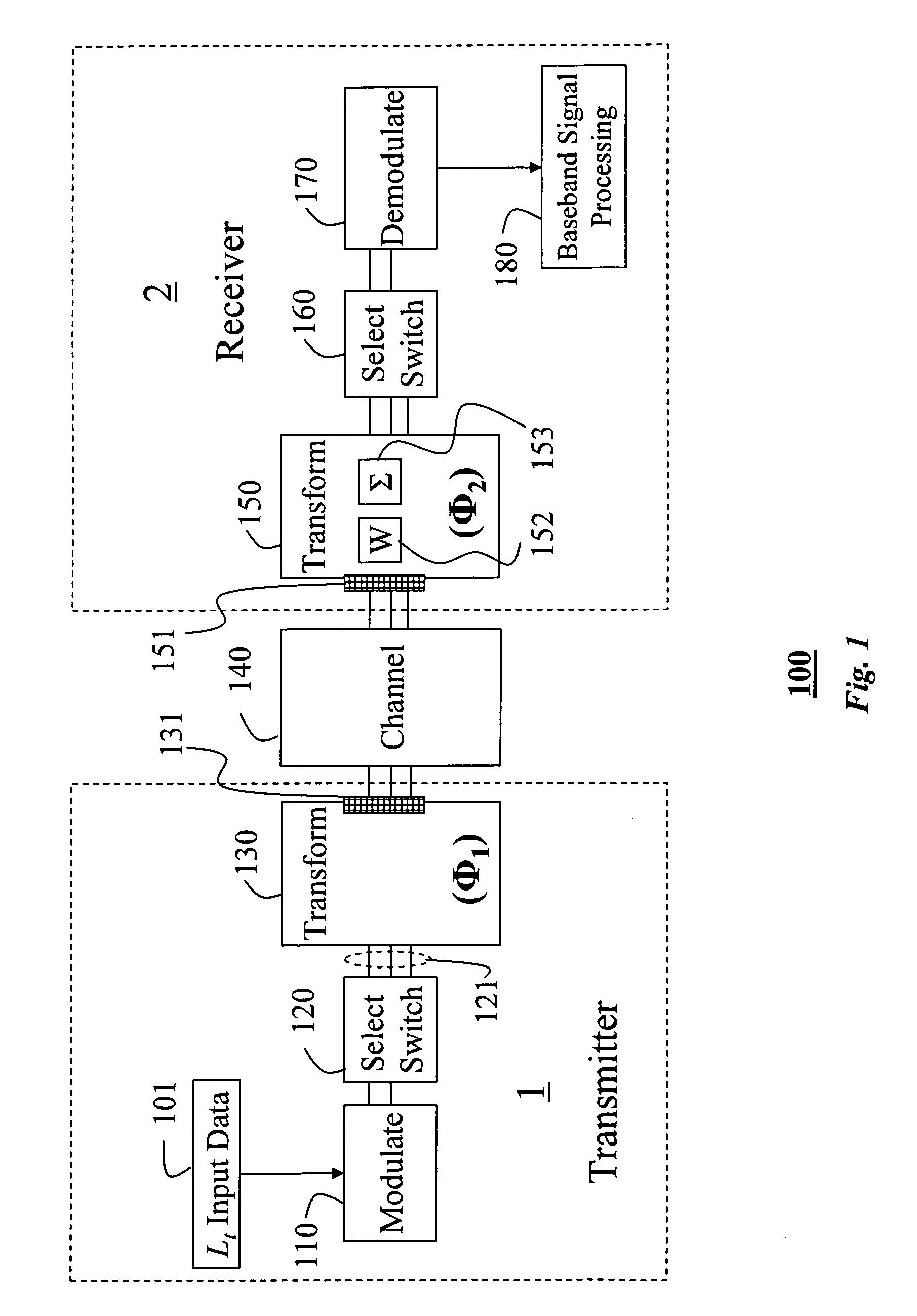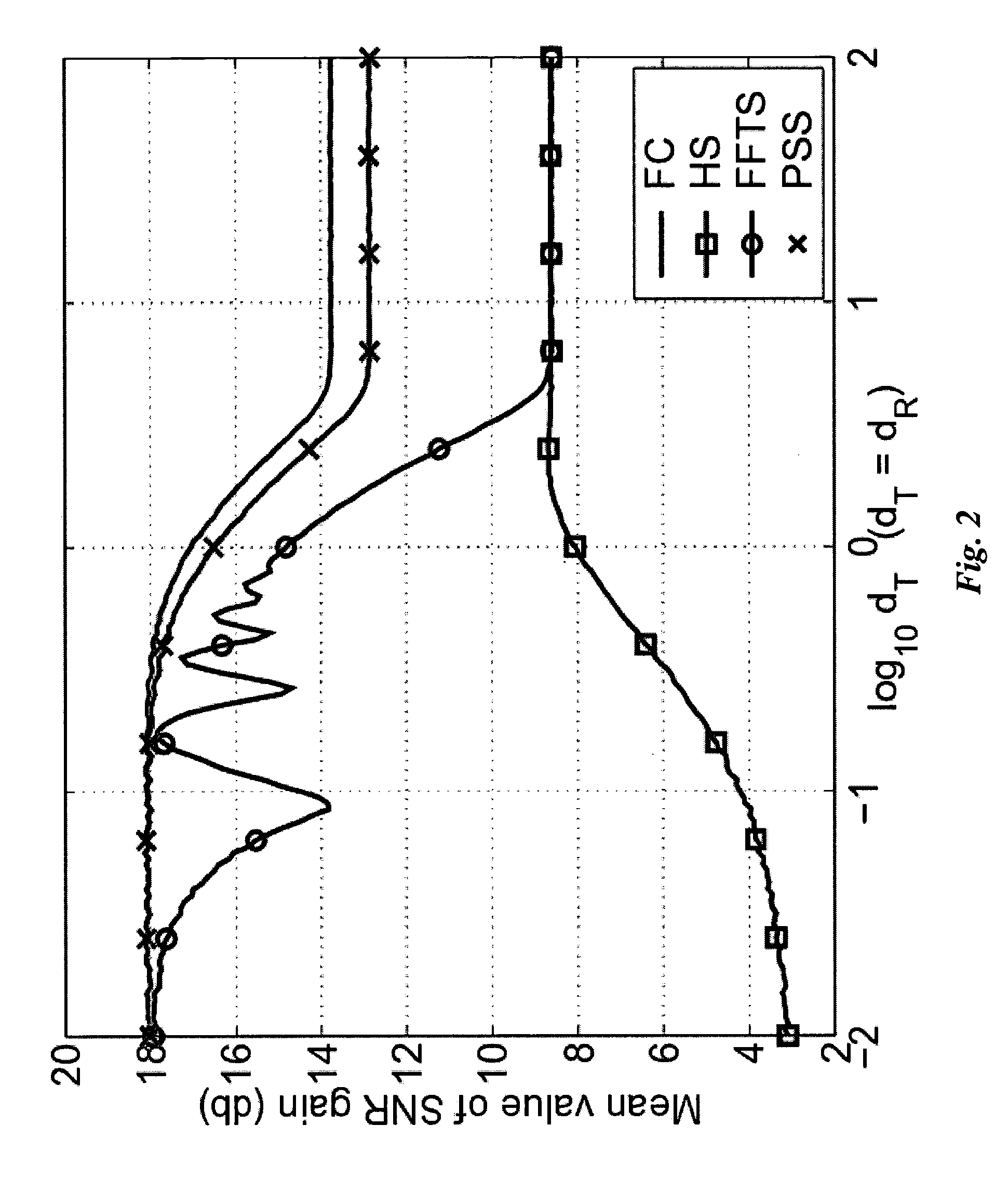RF signal processing in multi-antenna systems
a multi-antenna and signal processing technology, applied in the field of multi-antenna communication systems, can solve the problems of prior art antennas that only operate in the spatial domain and can have significant performance degradation, and the operation of multiple rf chains is complicated and expensiv
- Summary
- Abstract
- Description
- Claims
- Application Information
AI Technical Summary
Benefits of technology
Problems solved by technology
Method used
Image
Examples
Embodiment Construction
[0015]FIG. 1 shows a multi-antenna system 100 that uses the antenna selection method according to the invention. In a transmitter 1, Lt data streams 101 are generated. These streams can be either different signals obtained through a space-time coder, i.e., in multiplexing transmission, or the same signal encoded with different weights, i.e., in diversity transmission. The streams are modulated 110 to passband RF signals. A selection switch 120 links these signals to Lt of the t branches 121 associated with the t transmit antennas (t≧Lt) 131. In the new invention, the t passband branches 121 are transformed 130 by a t×t matrix operation Φ1 before they are applied to the t transmit antennas, and passed through the channel 140.
[0016]At a receiver 2, the signals are received via the channel 140 by r receive antennas 151. The received signals are transformed 150 by an r×r matrix operation Φ2, and Lr of the transformed signals are selected 160, where Lr≦r. The selected signals 161 are dem...
PUM
 Login to View More
Login to View More Abstract
Description
Claims
Application Information
 Login to View More
Login to View More - R&D
- Intellectual Property
- Life Sciences
- Materials
- Tech Scout
- Unparalleled Data Quality
- Higher Quality Content
- 60% Fewer Hallucinations
Browse by: Latest US Patents, China's latest patents, Technical Efficacy Thesaurus, Application Domain, Technology Topic, Popular Technical Reports.
© 2025 PatSnap. All rights reserved.Legal|Privacy policy|Modern Slavery Act Transparency Statement|Sitemap|About US| Contact US: help@patsnap.com



